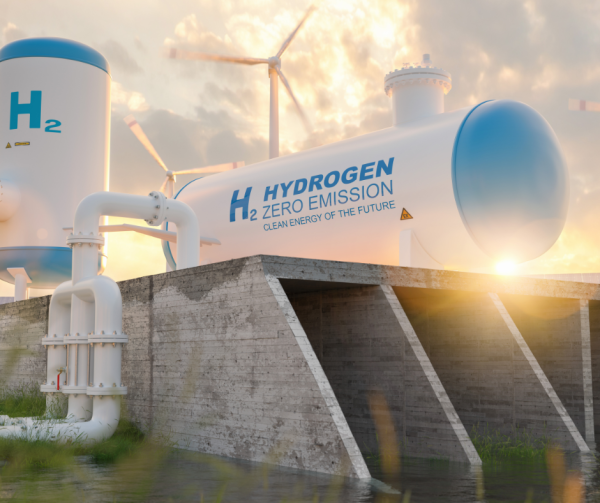Hydrogen as a Clean Fuel – What You Need to Know
January 11, 2023
This year’s UNC Cleantech Summit on March 27-28, 2023 will feature a panel about clean hydrogen. I had the pleasure of speaking with the panel’s moderator, Jay Dauenhauer, about what we should know about these topics going into the Summit. Jay is a Project Manager at a renewable energy project developer called Urban Grid and hosts his very own energy podcast, Energy Cast.
Hydrogen fuel cells combine hydrogen and oxygen atoms to produce electricity. Besides electricity, these battery-like cells only produce water and little amounts of heat. An energy source is needed to power these cells, and clean energy advocates would prefer that source to be from renewable energy (producing “green” hydrogen). Jay explained that energy markets could certainly accommodate this in regions with a lot of curtailment (abundance of excess renewable energy), like California who produced over a terawatt hour of excess solar energy last year: “If you could have entities on the grid that could eat up the excess electricity at times like that, that would be a beautiful marriage. You’re eliminating curtailments, using all of your energy produced, and making something that can be stored like hydrogen, which is carbon free.” In many areas, there’s a plentiful supply of excess renewable energy waiting to be used for something like green hydrogen.
How will we end up using hydrogen in the energy market? Jay says that it’s definitely early days, but he could see hydrogen overtaking lithium batteries as the main power for electric vehicles (EVs). First off, using lithium to electrify the nation’s fleet will require mining immense amounts of rare earth metals. Also, using hydrogen-powered EVs would allow us to use the same infrastructure we have right now- gas stations. Replacing gasoline at the gas station with hydrogen would ease the cultural transition to clean energy as people are already used to this infrastructure . Jay explains that lithium might be an intermediate energy source for EVs, with hydrogen being the long-term goal: “I will go as far as to say, I think that we might look at electric vehicles similarly to how we looked at CFL light bulbs in the 2000s. We were getting away from incandescent light bulbs so we switched to CFLs, and then we went to LEDs about five years later. CFLs had about a five-year period.” We might see lithium batteries be the short-lived CFL light bulbs of the 2000s and hydrogen the LEDs of today.
One of the most interesting things about hydrogen is that there are different “colors” depending on which fuel source is being used. As mentioned already, green hydrogen is made using clean energy to electrolyse water (split it into hydrogen and oxygen), emitting no carbon dioxide in the process. On the opposite side of the spectrum, black or brown hydrogen is made using fossil fuels. Hydrogen can also be made using natural gas and heated water. This process does produce carbon dioxide, but carbon capture and storage can help prevent it from getting into the atmosphere, which is what blue hydrogen production does. Grey hydrogen (the most common form) is the same process but without capturing the released carbon dioxide. Pink hydrogen uses nuclear power to power electrolysis, while yellow hydrogen uses solar power. There are even more colors than listed here, and the panel will go into even more detail about each one’s benefits/drawbacks.
What kinds of companies can we expect to see on the hydrogen panel? One that Jay described is Monolith Corporation, a company which uses a process called methane pyrolysis to produce green hydrogen. This involves converting natural gas into hydrogen, yielding carbon in the form of black dust with no local emissions. A company called Black & Veatch will also be there as the “Green Panelist,” and they are the Engineering Procurement and Construction (EPC) vendor for the ACES Delta Project (the Advanced Clean Energy Storage hub). This project is based in Utah and is striving to produce, store, and deliver green hydrogen to the Western US.
About the Author
This article was written by Sarah Masters, a sophomore at UNC-Chapel Hill majoring in Environmental Science and minoring in Public Policy. She is currently an IE Cleantech Corner Initiative intern involved with the planning of the 2023 program. Connect with her on LinkedIn.
